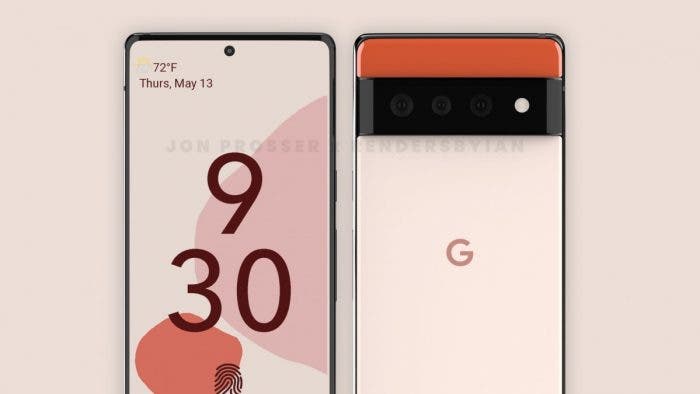In the second half of the year, we will see the premiere of the Google Pixel 6, and the company will also return to the market with an enlarged version of the flagship, but with the name Google Pixel 6 Pro. Last week, insider John Prosser posted on the network renders of smartphones, which this time look unusual and all thanks to an unusual block of cameras. According to rumors, the basic version will receive two image sensors, and the firmware will receive three key updates.
Today, insiders showed the Google Pixel 6 Pro main camera unit closer, and also told more about it. It is expected that the smartphone will receive a 50-megapixel lens as the main sensor, which will be complemented by a wide-angle module. A nice innovation is the 8-megapixel periscope camera with support for 5x optical zoom. There is also a fourth sensor, which is responsible for color correction. The telephoto lens is being swapped for the basic version, but its resolution is unknown.
![]()
Please note that in the renders from John Prosser, the Pixel 6 Pro has a triple camera; and no fourth sensor. Therefore, let’s not rush to take any of the information as official.
![]()
Gizchina News of the week
Recall that there are rumors on the network that the Pixel 6 series will receive a priority Google SoC instead of the Qualcomm SoCs, and they are creating it together with Samsung. Along with smartphones, the company can present Google Watch smartwatches.
Google patented a sub-screen camera for Pixel smartphones
Google, according to LetsGoDigital, has patented a new camera design for smartphones. We are talking about a module located behind the display. It is possible that such a block will arrive with the future devices of the Pixel family.
As you can see in the illustration (see below); it is proposed to make a small window at the top of the smartphone screen. A prismatic mirror element will be located under it.
![]()
An image sensor with optics and a small auxiliary display will be installed inside the case. The prismatic element will be able to rotate 180 degrees. Depending on the current mode of the smartphone, this unit will reflect the light on the camera sensor or the image from the auxiliary internal display onto the window in the main screen.
Thus, in normal mode, the user will see the full-screen image. When the front camera is activate, the internal prism unit will unfold to allow light to enter the image sensor.
Alas, it is not yet clear when Google plans to implement this technical solution in commercial smartphones. Observers believe that a camera with the described design may appear in devices of the Pixel 7 generation.


